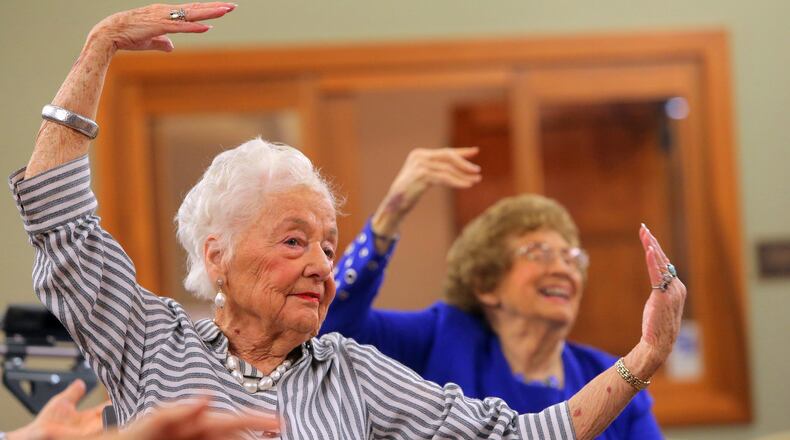Quarantines. Lockdowns. Social distancing. Face masks. So much of our lives over the past 15 months has been defined by staying away from others.
That’s been the case especially for older adults, who are at greater risk of severe illness and death from COVID-19. For this population, staying away from friends, family and caregivers has been a matter of life or death.
Even before the pandemic, older people, especially those who live alone, have been at high risk of social isolation or loneliness. Nearly one in four adults aged 65 and over has infrequent contacts with others and is considered socially isolated.
In the 10-county metro area, the growth in the number of adults aged 65 and up who live alone has more than doubled since 2000 and now stands at about 133,000, according to a recent ARC data analysis.
Life changes such as caring for an ailing partner, the death of a spouse, hearing loss, or moving to a new place can create feelings of loneliness. Social opportunities, once taken for granted, can quickly disappear.
And this carries potentially serious health consequences, such as increased risk of high blood pressure, stroke, cognitive decline, and dementia. Studies have shown that extended loneliness and isolation can be as dangerous to health as smoking 15 cigarettes a day.
And it’s costly for all of us. Each month, Medicare spends approximately $134 more for each socially isolated older adult, adding up to billions of dollars a year.
Credit: contributed
Credit: contributed
While vaccines promise a return to normalcy soon, the collective crisis we have lived through this past year has underscored -- and exacerbated -- the perils of social isolation. Gathering places such as senior centers and places of worship closed. Meanwhile, many older adults were reluctant to allow paid caregivers into their homes. The result: severely limited social interactions and reduced access to needed services.
Segments of the population who don’t speak English well have been hit hard. And people living with dementia have been particularly vulnerable. Sensory stimulation – gestures as simple as hand massages and brushing hair – helps these individuals interact with their surroundings and stay in the moment. Without such stimuli and regular visits from loved ones, daily function and mental health have suffered.
So, what can we do about this urgent issue? The Atlanta Regional Commission, which serves as the federally designated metro Atlanta Area Agency on Aging, recently issued a report that details a range of steps to ease isolation, including:
- Developing vibrant, livable communities for people of all ages that encourage socializing with their neighbors. That may mean accessible parks and trails where you might bump into a friend or meet someone new; a senior center that offers group classes; and even outdoor dining options where a meal becomes a community social activity.
- Investing in planning efforts that enhance safety and walkability by improving lighting and sidewalks, installing benches, and ensuring safe street crossings that connect homes and services.
- Providing accessible and affordable transportation options, including public transit, that help people stay connected to loved ones, see their doctors, and go to the store. When public transport is not available, support nonprofit, community, or volunteer options.
- Making it easier for older adults to connect online, with policies that increase high-speed internet access such as reduced broadband rates and free Wi-Fi in community gathering spaces. Support resources that teach older adults how to use technology and social media to stay connected with family and social groups.
- Providing opportunities for older adults to become volunteers so they can stay active. For many older adults, this is an outlet for community engagement. Half of people age 50 or older say it’s extremely or very important to have volunteer opportunities that allow them to actively engage in their community, according to the AARP Home and Community Preferences Survey.
- Finding ways to check in regularly with older adults in your life, or those you don’t know, by participating in a program like our One2One, which enables volunteers to contact older adults and people with disabilities via phone every week.
The risk of social isolation for older people won’t disappear as more of us get vaccinated and our social interactions flourish. The reality is that in our region, many older adults live alone, and the population of older adults will continue growing fast.
If the pandemic has taught us anything, it is that regardless of our age, human interactions are vital to our well-being in so many ways. Each and all of us have a role to play in mitigating the social isolation of older residents.
Becky Kurtz is managing director, aging and independence services, for the Atlanta Regional Commission.
About the Author
Keep Reading
The Latest
Featured


